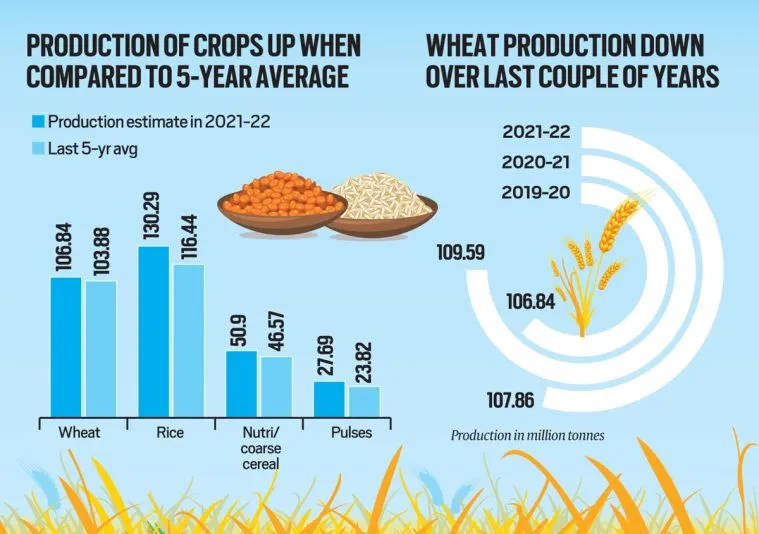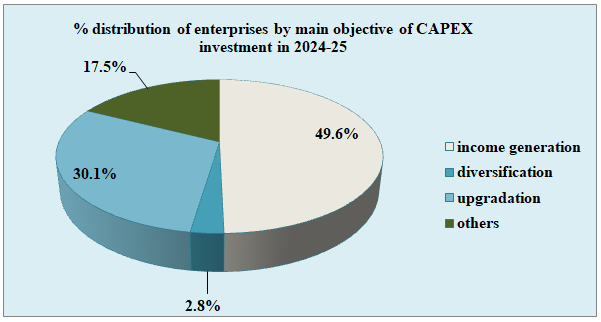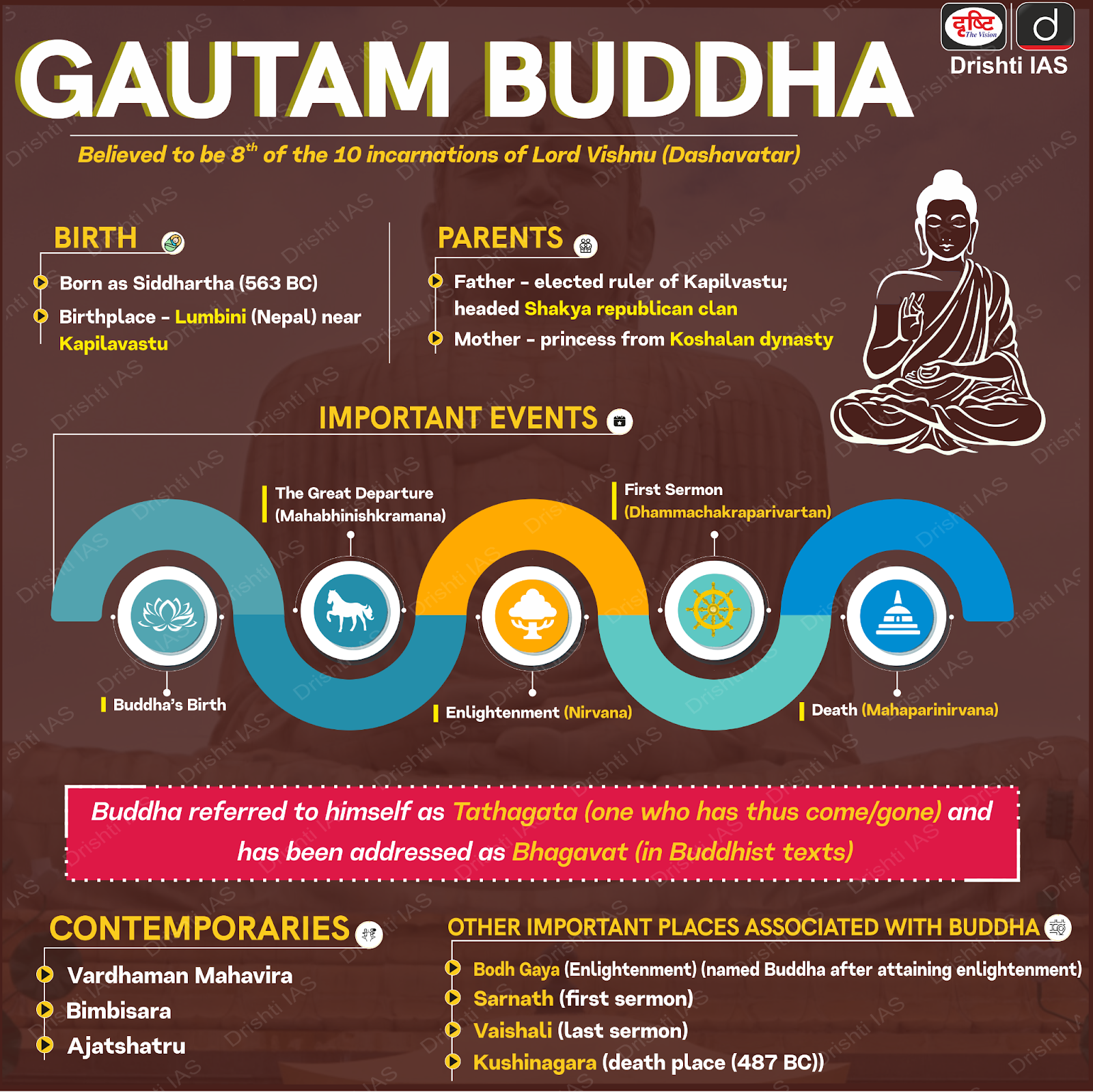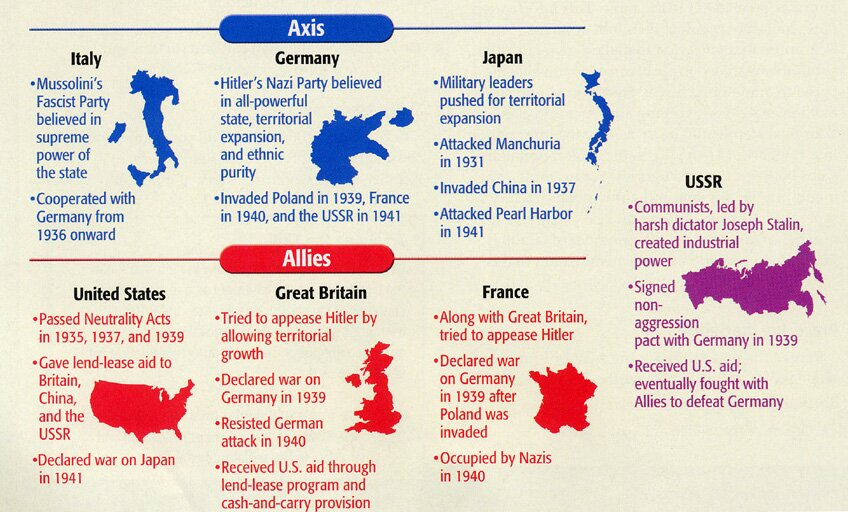Internal Security
Strategic Defence Technologies in India
For Prelims: BrahMos, S-400 Triumf, Supersonic Cruise Missile, Indian Ocean Region, unmanned aerial system (UAS), US-India COMPACT Initiative, MFN, Scorpene Submarines.
For Mains: Strategic defence technologies in India and their role in India’s defence preparedness.
Why in News?
India’s Defence Minister Rajnath Singh inaugurated the BrahMos Integration and Testing Centre in Lucknow, underscoring the significance of the BrahMos supersonic cruise missile.
- In a separate development, India's growing defence ties and the effectiveness of the S-400 Triumf system were highlighted as it successfully intercepted missile and Asisguard Songar drone attacks launched by Pakistan, showcasing a swift and decisive kinetic response.
What are Key Facts About BrahMos and S400 Triumf?
BrahMos
- Name Origin: "BrahMos" is derived from Brahmaputra (India) and Moskva (Russia) rivers.
- Developed By: BrahMos Aerospace a joint venture between India’s Defence Research and Development Organisation (DRDO) (50.5%) and Russia's NPO Mashinostroyenia (NPOM) (49.5%).
- First Test: BrahMos was successfully tested in 2001, from Chandipur, Odisha.
- Type: BrahMos is a two-stage supersonic cruise missile designed for high precision and speed. It features a solid-propellant booster in the first stage, followed by a liquid-fuelled ramjet in the second stage that sustains a cruise speed of Mach 3 (three times the speed of sound), making it one of the fastest cruise missiles in the world.
- It is a supersonic cruise missile with 'fire and forget' capability (requiring no further input after being launched).
- BrahMos is a stand-off range weapon designed to be launched from a safe distance beyond enemy defense range. It can cruise at altitudes up to 15 km and strike targets as low as 10 meters for precision.
- Range: BrahMos' range has evolved from 290 km to 350 km, with future versions aiming for up to 800 km and hypersonic speeds (Mach 5+).
- BrahMos is three times faster, 2.5 times longer in range, and has a higher seeker range than subsonic missiles, resulting in greater accuracy and nine times more kinetic energy.
- Variants of BrahMos:
- Ship-Based Variant: Deployed on the Indian Navy's frontline warships since 2005, it can launch a single missile or salvo (up to 8) missiles, effectively executing both sea-to-sea and sea-to-land strikes.
- It was first deployed on the INS Rajput, enhancing the Indian Navy's strike capability.
- Land-Based Variant: It has 4-6 mobile launchers, each carrying 3 missiles that can be fired simultaneously at different targets in various configurations.
- It was operationalized by the Indian Army in 2007, cruises at 2.8 Mach and, after upgrades, can strike targets with precision up to 400 kilometres.
- Air-launched Variant: The BrahMos Air-Launched Cruise Missile (ALCM) is the heaviest weapon integrated with India’s Sukhoi-30 MKI fighter jets.
- With a 1,500 km range, BrahMos-armed Sukhois serve as a key deterrent along borders and in the Indian Ocean Region.
- Submarine-launched Variant: It can operate from 50 meters underwater using separate settings for underwater and aerial flight.
- Futuristic BrahMos-NG: BrahMos-NG (Next Generation), a lighter, stealthier next-gen missile under development, is designed for air, naval, and underwater platforms and torpedo tube launch capability
- Ship-Based Variant: Deployed on the Indian Navy's frontline warships since 2005, it can launch a single missile or salvo (up to 8) missiles, effectively executing both sea-to-sea and sea-to-land strikes.
S400 Triumf
- About: The S-400 Triumf, developed by Russia, it is one of the world’s most advanced long-range surface-to-air missile (SAM) systems.
- It is dubbed SA-21 Growler by North Atlantic Treaty Organization (NATO), it was inducted into service in 2007.
- It is designed for multi-layered air defence, it can intercept a wide range of aerial threats including aircraft, ballistic missiles, cruise missiles, drones, and stealth targets.
- Range: Engages targets up to 400 km away and at altitudes up to 30 km.
- Speed: Can intercept targets flying at speeds of up to Mach 14 (~17,000 km/h).
- Radar Reach: Detects targets up to 600 km using advanced radar systems.
- Target Handling: Tracks up to 300 targets and engages up to 36 simultaneously.
- Missile Types:
- 40N6: Long-range (up to 400 km)
- 48N6: Medium-range (up to 250 km)
- 9M96E / 9M96E2: Short to medium-range (40–120 km)
- India’s Role with the S-400: In 2018, India signed a USD 5.4 billion deal with Russia for five S-400 air defence squadrons.
- Three are currently operational, with two more due by 2026. Known as Sudarshan Chakra in India, the S-400 was used by the IAF to counter a Pakistani aerial attack, highlighting its strategic significance.
Note: Asisguard Songar drones are Turkey’s first indigenous armed unmanned aerial system (UAS), equipped with assault rifles, grenade launchers, mortars, or tear gas, all featuring safety mechanisms. Designed for stealth and coordination, they enable reconnaissance and precision strikes.
What is Kinetic and Non-kinetic Warfare?
- Kinetic Warfare: Kinetic warfare involves the use of direct physical force, such as airstrikes, artillery, and ground assaults, to defeat an adversary.
- Examples include Operation Sindoor (2025), and the Balakot Airstrike (2019), where the IAF targeted Jaish-e-Mohammed camps after the Pulwama terror attack.
- Non-kinetic Warfare: It involves strategies that do not rely on direct physical attacks but instead target an enemy’s political, economic, informational, or psychological stability.
- It includes cyber warfare (e.g., Israel’s cyber attack on Iran’s nuclear facilities), information warfare (e.g., fake Rafale downing claims during Operation Sindoor), electronic warfare (e.g., India’s Samyukta and Divya Drishti systems), psychological warfare (e.g., threats, troop videos), and economic warfare (e.g., India revoking Pakistan’s Most-Favored-Nation (MFN) status post-Pulwama).
What are Defence Agreements of India in the Recent Past?
- India-Russia: India has acquired S-400 systems, MiG-29 fighters, and Kamov helicopters from Russia, alongside agreements for licensed production of T-90 tanks, Su-30MKI fighters, AK-203 rifles, and BrahMos missiles.
- India-US: India and the US launched the US-India COMPACT initiative, aimed at fostering military and technological cooperation.
- A Security of Supply Arrangement (SOSA) and Memorandum of Agreement on Liaison Officers were signed, ensuring reciprocal support for defence needs.
- India has integrated several US-origin defence items, including C-130J Super Hercules, C-17 Globemaster III, and AH-64E Apache helicopters, and is also in talks to acquire F-35 Lightning-II combat aircraft.
- India-UK: Finalised Free Trade Agreement to deepen defence trade and cooperation. Thales UK and Bharat Dynamics Limited (BDL) for the supply of laser beam riding MANPADs (Man-Portable Air Defense Systems) and STARStreak missiles (short range surface-to-air missile).
- Both are collaborating on a first-of-its-kind air-to-air missile assembly and testing facility in Hyderabad.
- India-France: India and France signed an Inter-Governmental Agreement (IGA) for 26 Rafale-M aircraft for the Indian Navy and a Defence Industrial Roadmap, covering Scorpene submarines, Rafale jets, and indigenous production.
Conclusion
India’s defence strategy combines kinetic (BrahMos strikes, S-400 interceptions) and non-kinetic (cyber, electronic warfare) capabilities to counter threats. Strengthened by agreements with Russia (S-400, BrahMos), the US (F-35 talks), and France (Rafale-M), India is enhancing multi-domain warfare readiness, ensuring deterrence against adversaries like Pakistan and China while boosting indigenous defence production.
|
Drishti Mains Question: With reference to India's evolving strategic environment, explain the relevance of developing indigenous air defence and missile systems. |
UPSC Civil Services Examination Previous Year Question (PYQ)
Q. What is “Terminal High Altitude Area Defense (THAAD)”, sometimes seen in the news? (2018)
(a) An Israeli radar system
(b) India’s indigenous anti-missile programme
(c) An American anti-missile system
(d) A defence collaboration between Japan and South Korea.
Ans: (c)
Mains
Q. What is the significance of Indo-US defence deals over Indo-Russian defence deals? Discuss with reference to stability in the Indo-Pacific region. (2020)


Agriculture
Enhancing Agricultural Diversification
For Prelims: Rice, Wheat, Cotton, Soybean, Minimum Support Prices (MSP), GM Crops, Public Distribution System, PM-KISAN, Malnutrition, Monoculture, Monsoon, Millets, Pulses, Oilseeds, Horticulture Crops, Price Deficiency Payment Scheme (PDPS), Farmer Producer Organizations, National Millet Mission, Mission for Integrated Development of Horticulture (MIDH)
For Mains: Concerns related to rice and wheat cultivation, Measures to be adopted to enhance agricultural diversification in India.
Why in News?
Agricultural trends in India highlight a consistent increase in the area planted with rice and wheat cultivation, driven by supportive policies, better breeding, and reliable yields, while other crops see fluctuating acreages due to lower returns and price instability.
What are the Trends in Crop Cultivation in India?
- Wheat and Rice: Rice cultivation has increased significantly, especially in Punjab, where the area under cultivation rose by around 9%, and in Telangana, where it surged by approximately 348% between 2015–16 and 2024–25.
- In Madhya Pradesh, the acreage under both wheat and rice has also grown notably, with wheat cultivation increasing by nearly 32% and rice by around 92% during the same period.
- Cotton: Cotton cultivation in Punjab dropped by around 71% from 2015 to 2025. In Telangana, the area under cotton declined by approximately 23% from 2020 to 2025.
- Chickpea (Chana): The area under chickpea in Madhya Pradesh declined by approximately 34%, from 30.2 lakh hectares in 2015-16 to 20.1 lakh hectares in 2024-25.
- Soybean: Soybean acreage in Madhya Pradesh decreased by approximately 2.2%, from 59.1 lakh hectares in 2015-16 to 57.8 lakh hectares in 2024-25, after peaking at 66.7 lakh hectares in 2020-21 due to high prices.
Why are Rice and Wheat the Most Preferred Crops Among Farmers?
- MSP Procurement: The government ensures near-guaranteed procurement of rice and wheat at Minimum Support Prices (MSP), offering price stability and income assurance, which makes them less risky than crops without such support.
- Irrigation Support: Rice and wheat are mainly grown with irrigation, reducing dependence on rainfall and lowering yield risk, as access to canal and groundwater makes cultivation more reliable.
- Continuous Genetic Improvement: Both crops benefit from strong public research support, leading to development of high-yielding, disease-resistant, and climate-smart varieties.
- Indian Council of Agricultural Research (ICAR) used CRISPR-Cas to create Kamala, a genetically edited Samba Mahsuri rice that produces 450–500 grains per panicle (versus 200–250 in the parent), yields 5.37–9 tonnes/hectare, matures in 130 days (15–20 days faster), and conserves water and fertilisers through enhanced root biomass.
- ICAR scientists used CRISPR (Clustered Regularly Interspaced Short Palindromic Repeats)-Cas to edit the Drought and Salt Tolerance (DST) gene in the rice variety Cottondora Sannalu (MTU-1010), creating Pusa DST Rice 1, which is more tolerant to heat, salinity, and water stress by suppressing the gene that limits abiotic stress resistance.
- In wheat, the Green Revolution varieties like Kalyan Sona and Sonalika not only increased yields significantly (from 1-1.5 tonnes per hectare to 3.8 tonnes) but also improved resistance to diseases and environmental stresses.
- In contrast, crops like cotton, oilseeds, and pulses have seen limited R&D and no major GM breakthroughs since Bt cotton (2002–06), resulting in stagnant yields, unstable returns, and fluctuating cultivation.
- High Demand & Stable Market: Rice and wheat, staple foods with consistent domestic and global demand, are used in Public Distribution System (PDS), Mid-Day Meals, and welfare schemes, ensuring steady sales.
- Policy & Infrastructure Bias: Procurement infrastructure (such as mandis and storage) is better developed for cereals than for other crops, and loan waivers and subsidies often favor staple crops.
- Government schemes like Pradhan Mantri Kisan Samman Nidhi (PM-KISAN) and fertilizer subsidies support rice and wheat production.
What are the Implications of Excessive Focus on Rice and Wheat?
- Nutritional Deficiencies: Excessive reliance on rice and wheat limits nutritional diversity, as they are mainly carbohydrates with fewer proteins and micronutrients, contributing to malnutrition (such as protein and iron deficiencies).
- Soil Degradation: Overuse of water for rice, combined with chemical fertilizers, contributes to soil salinity and nutrient imbalance, gradually reducing soil health.
- Salinity-affected areas are projected to increase from 6.7 million hectares to 11 million hectares by 2030.
- Water Scarcity: Rice cultivation’s high water consumption and excessive groundwater extraction strain water resources, threatening agriculture sustainability.
- Groundwater depletion has become a serious concern in Punjab, Rajasthan, and Haryana, where the extraction rate has exceeded the recharge rate by 66, 51, and 34%, respectively.
- Market Distortions: The MSP system can distort the market by promoting monoculture farming and neglect of more profitable or sustainable crops, resulting in overproduction, price fluctuations, and unsustainable practices.
- E.g., Neglect of pulses, oilseeds, and millets leads to import dependency (e.g., 60% of edible oil is imported).
- Regional Disparities: Policy and procurement bias toward rice and wheat benefits irrigated northwestern states, leaving out rainfed and tribal regions with diverse cropping patterns.
- Monoculture Risk: Reduced crop diversity increases vulnerability to pests, diseases, and climate shocks, threatening food security.
- E.g., Wheat blast disease is a fungal infection caused by the fungus Magnaporthe oryzae Triticum (MoT) that primarily affects wheat crops.
What are India’s Initiatives Regarding Crop Diversification?
What Measures can be Adopted to Enhance Agricultural Diversification in India?
- Policy & Institutional Reforms: Expand MSP coverage to include millets, pulses, oilseeds, and horticulture crops under assured procurement.
- Compensate farmers under Price Deficiency Payment Scheme (PDPS) if prices fall below MSP and strengthen Farmer Producer Organizations (FPOs) and local mandis for non-cereal crops through decentralized procurement.
- Promote Climate-Resilient Crops: Incentivize millets (jowar, bajra, ragi) through the National Millet Mission, boost pulses and oilseeds production, and expand the Mission for Integrated Development of Horticulture (MIDH) for fruits, vegetables, and floriculture.
- Strengthen Market Linkages: Expanding National Agriculture Market (e-NAM) for better price discovery, promoting contract farming and agri-startups through corporate partnerships (e.g., ITC’s "e-Choupal"), and focusing on export promotion of high value products like spices, and organic produce.
- Infrastructure & Technology Support: Provide post-harvest support through cold chains, warehouses, and food processing units under the PM Kisan SAMPADA Yojana to increase shelf life of perishable products.
- Financial Support Measures: Expand PM Fasal Bima Yojana (PMFBY) to cover diversified crops, and offer lower interest rate loans for non-cereal crops and agro-processing.
- Provide farmer training through Skill India and Kisan Drones for modern farming techniques.
- Regional-Specific Strategies: In Punjab-Haryana, shift to cotton, maize, and agroforestry to reduce groundwater stress; in Eastern India, promote flood-resistant rice varieties and aquaculture; and in rainfed areas, focus on dryland farming with millets and pulses.
Conclusion
India’s focus on rice and wheat cultivation, driven by MSP and irrigation support, is leading to nutritional, environmental, and market imbalances. Diversifying agriculture through policy reforms, climate-resilient crops, and improved infrastructure can help sustain agriculture and address these issues while enhancing farm incomes and food security.
|
Drishti Mains Question: Q. What measures can be adopted to enhance agricultural diversification in India? |
UPSC Civil Services Examination Previous Year Question (PYQ)
Prelims
Q. In the context of India’s preparation for Climate -Smart Agriculture, consider the following statements:
- The ‘Climate-Smart Village’ approach in India is a part of a project led by the Climate Change, Agriculture and Food Security (CCAFS), an international research programme.
- The project of CCAFS is carried out under Consultative Group on International Agricultural Research (CGIAR) headquartered in France.
- The International Crops Research Institute for the Semi-Arid Tropics (ICRISAT) in India is one of the CGIAR’s research centres.
Which of the statements given above are correct?
(a) 1 and 2 only
(b) 2 and 3 only
(c) 1 and 3 only
(d) 1, 2 and 3
Ans: (d)
Q. With reference to the ‘Global Alliance for ClimateSmart Agriculture (GACSA)’, which of the following statements is/are correct? (2018)
- GACSA is an outcome of the Climate Summit held in Paris in 2015.
- Membership of GACSA does not create any binding obligations.
- India was instrumental in the creation of GACSA.
Select the correct answer using the code given below:
(a) 1 and 3 only
(b) 2 only
(c) 2 and 3 only
(d) 1, 2 and 3
Ans: (b)
Mains
Q. How did India benefit from the contributions of Sir M. Visvesvaraya and Dr. M.S. Swaminathan in the fields of water engineering and agricultural science respectively? (2019)
Q. Explain various types of revolutions, took place in Agriculture after Independence in India. How have these revolutions helped in poverty alleviation and food security in India? (2017)
Indian Economy
Capex Spending of Private Sector
For Prelims: E-commerce, Unified Payments Interface (UPI), Digital Public Infrastructure, production-linked incentive (PLI) schemes, NSSO (National Sample Survey Office), Fiscal deficit, National Infrastructure Pipeline.
For Mains: Role of Private Sector in Indian Economic Growth, Key Drivers Shaping India's Economic Growth Outlook, Major Challenges Hindering India’s Sustained Economic Growth.
Why in News?
The National Statistics Office (NSO), under the Ministry of Statistics and Programme Implementation (MoSPI), released its inaugural 'Forward-Looking Survey on Private Sector Capex Investment Intentions' survey.
- The survey was conducted under the Collection of Statistics Act, 2008, it aims to estimate trends in private corporate capital expenditure (capex) over five financial years, from 2021–22 to 2025–26.
What are the Trends in Private Sector CAPEX Investment?
- Overall Growth in Capex: Private sector capital expenditure (capex) rose by 66.3% over four years between FY 2021-22 and FY 2024-25. However, it is projected to decline by 25.5% in FY 2025-26, reflecting cautious planning by firms following a strong capex cycle in FY 2024-25.
- This decline is driven by factors such as high borrowing costs, weak demand, and geopolitical uncertainties.
- Purpose and Nature of Investments: In FY25, 49.6% of enterprises invested for income generation, 30.1% for upgradation, and 2.8% for diversification.
- The estimated capex per enterprise for new asset purchases in FY25 was Rs 172.2 crore.
- Sectoral Distribution of Capex: Manufacturing received the highest share at 43.8%, followed by Information & Communication (15.6%) and Transportation & Storage (14%).
- Asset-wise, 53.1% of total capex was directed towards machinery & equipment, 22% to capital work-in-progress, and 9.7% to buildings and structures.
- Growth in Gross Fixed Assets (GFA): The average GFA per enterprise in the private corporate sector saw a growth of 27.5% from Rs 3,279.4 crore in 2022–23 to Rs 4,183.3 crore in 2023–24.
- The highest GFA was seen in the Electricity, Gas, Steam, and Air Conditioning Supply sector followed by Manufacturing.
- Gross Fixed Assets (GFA) refer to the total value of physical assets owned by an enterprise, such as machinery, buildings, and equipment, after accounting for depreciation.
What is Capex?
- About: Capex (Capital Expenditure) refers to funds spent on acquiring, upgrading, or maintaining physical assets like property, equipment, or technology. It’s a long-term investment recorded as an asset and depreciates over time. Examples include machinery purchases and facility upgrades.
- Unlike Operating expenses (Opex), which are the day-to-day costs of running a business, Capex involves substantial investments intended to generate long-term benefits.
- Capex Data: The Indian government allocates capex through its annual budget, presented by the Finance Minister.
- Capex Expenditure of Rs 11.21 lakh crore (3.1% of GDP) earmarked in FY2025-26.
- Significance: Capex plays a vital role in economic growth due to its high multiplier effect. It boosts ancillary industries, creates jobs, and enhances labour productivity.
- As a countercyclical fiscal tool, Capex stabilizes the economy and supports long-term revenue generation through asset creation.
- It also helps reduce liabilities via loan repayments and catalyses private investment, making it crucial for sustained economic development.
What are the Challenges Hindering Private Sector Capex?
- Geopolitical Uncertainty and Global Trade Disruptions: Heightened tensions (e.g., US-China tariffs, global sanctions) create unpredictability in trade and input costs.
- Industries reliant on imported materials are especially cautious due to supply chain vulnerabilities.
- High Borrowing Costs: Elevated interest rates increase the cost of financing large-scale projects, due to this companies prefer to use internal accruals rather than borrow from banks.
- Weak Consumer Demand: Low private consumption affects business confidence to invest in expanding capacity.
- Despite some recovery in demand post-Covid-19, it hasn't been robust enough to justify major greenfield investments.
- Lack of Greenfield Projects; Most current investments are brownfield (expansion of existing units), funded through internal funds.
- Greenfield investments (new units) that typically require bank funding are lacking, reducing overall capex visibility.
- Structural Bottlenecks: Delays in land acquisition and lack of labour reforms persist as major obstacles.
- Scarcity of skilled workers, exemplified by L&T's struggle to hire 40,000 workers, hampers project execution.
- Caution Due to IBC Experiences: Past bankruptcies (e.g., Jet Airways, Essar) under the Insolvency and Bankruptcy Code, 2016 have made firms more risk-averse. Fear of asset seizure leads to conservative financial planning.
- Low Capacity Utilisation Although some sectors (steel, cement, auto) report 75–80% utilisation, overall rates have dropped to 74.7% (Q3 FY24) from a peak of 76.3% in Q4 FY23. Without strong capacity use, firms see little incentive to expand further.
- Overconcentration of Investment: New private investments are mostly limited to a few large corporations like Reliance, Tata. A broader participation by India is essential for sustained economic growth.
What Can be Done to Enhance the Private Sector Capex?
- Strengthen Institutional Mechanisms and Credit Support: Strengthen the existing Revamp Project Monitoring Group (PMG) under the Cabinet Secretariat to ensure faster clearances of large private investment projects.
- Expanding the Emergency Credit Line Guarantee Scheme (ECLGS) for MSMEs and extending similar support to mid-sized manufacturing firms could significantly boost capex
- Utilize the Credit Guarantee Scheme for Startups (CGSS) to promote early-stage industrial and technological investments, encouraging innovation and growth in emerging sectors.
- Broaden Production Linked Incentive (PLI) Schemes: Introduce PLI for sectors like defence manufacturing, and precision engineering. Improve transparency and timeliness in PLI disbursements to build investor confidence.
- Improve Tax and Regulatory Framework: Reintroduce or enhance accelerated depreciation benefits for machinery and plant investment.
- Fastrack the National Logistics Policy (2022) which aims to reduce the cost of logistics from 13–14% of Gross Domestic Product (GDP) to 8–9%, improving the competitiveness of private manufacturers.
- De-risking Private Sector Investments: To de-risk private sector investments, promote the use of Infrastructure Investment Trusts (InvITs) and Real Estate Investment Trusts (REITs) in sectors such as roads, power, and railways.
- This approach will help attract private capital while distributing risks, thereby fostering investment in these critical sectors.
Conclusion
While private sector capex witnessed significant growth in the last few years, the projected decline in FY26 indicates a cautious investment sentiment amid uncertainties like high borrowing costs and global tensions. Nevertheless, the focus on upgradation and sectoral diversification reflects an evolving investment strategy aligned with economic stability.
|
Drishti Mains Question: What are the key challenges faced by the private sector in increasing capital expenditure in India? |
UPSC Civil Services Examination, Previous Year Questions (PYQs)
Prelims
Q. In the ‘Index of Eight Core Industries’, which one of the following is given the highest weight? (2015)
(a) Coal production
(b) Electricity generation
(c) Fertilizer production
(d) Steel production
Ans: (b)
Q. Increase in absolute and per capita real GNP do not connote a higher level of economic development, if: (2018)
(a) Industrial output fails to keep pace with agricultural output.
(b) Agricultural output fails to keep pace with industrial output
(c) Poverty and unemployment increase.
(d) Imports grow faster than exports.
Ans: (c)
Q. In a given year in India, official poverty lines are higher in some States than in others because: (2019)
(a) Poverty rates vary from State to State
(b) Price levels vary from State to State
(c) Gross State Product varies from State to State
(d) Quality of public distribution varies from State to State
Ans: (b)
Mains
Q.1 “Industrial growth rate has lagged behind in the overall growth of Gross-Domestic-Product(GDP) in the post-reform period” Give reasons. How far the recent changes in Industrial Policy capable of increasing the industrial growth rate? (2017)
Q.2 Normally countries shift from agriculture to industry and then later to services, but India shifted directly from agriculture to services. What are the reasons for the huge growth of services vis-a-vis the industry in the country? Can India become a developed country without a strong industrial base? (2014)


Important Facts For Prelims
Tapti Basin Mega Recharge Project
Why in News?
Madhya Pradesh (MP) and Maharashtra have signed a memorandum of understanding (MoU) to jointly implement the Tapti (Tapi) Basin Mega Recharge Project in MP, the world’s largest groundwater recharge scheme aimed at ensuring optimal utilization of river water resources for irrigation across both states.
What is the Tapti Basin Mega Recharge Project?
- About: It is a joint inter-state groundwater recharge initiative under which Madhya Pradesh and Maharashtra will jointly develop three Tapti River streams originating from Multai, MP.
- It is the third major inter-state river project involving MP, following the Ken-Betwa Link Project (MP & UP) and the Parbati-Kalisindh-Chambal Link Project (MP & Rajasthan).
- Key Features:
- Water Allocation: The project plans to divert water from the Tapti River to northeastern Maharashtra for drinking water and to support irrigation in southern and southeastern Madhya Pradesh.
- Total usage is 31.13 thousand million cubic feet (TMC), with 11.76 TMC allocated to MP and 19.36 TMC for Maharashtra.
- The project includes construction of a diversion weir at the MP-Maharashtra border and development of right and left bank canals in both states.
- The project entails the use of 3,362 hectares of land in Madhya Pradesh, with no displacement or rehabilitation needed.
- Beneficiary Districts: The project covers the Burhanpur and Khandwa districts of MP and Akola, Amravati, and Buldhana in MH, which have historically faced groundwater stress and erratic rainfall.
- Water Allocation: The project plans to divert water from the Tapti River to northeastern Maharashtra for drinking water and to support irrigation in southern and southeastern Madhya Pradesh.
Key Facts Related to Tapti River
- Geography: The Tapti River, India's second-longest west-flowing river after the Narmada, flows through Madhya Pradesh, Maharashtra, and Gujarat.
- It is one of the 3 major rivers in India that flow westward, along with the Narmada and Mahi.
- It drains into the Arabian Sea at the Gulf of Khambhat in Gujarat.
- Basin Area & Terrain: The Tapi basin, bounded by the Satpura range (north), Mahadeo hills (east), Ajanta and Satmala hills (south), and the Arabian Sea (west).
- It flows between the Satpura Range and Mahadeo Hills, running parallel to the Narmada River to the north, separated by the main part of the Satpura Range.
- Tributaries: The Tapti has 14 major tributaries: 4 right-bank (Vaki, Aner, Arunawati, Gomai) and 10 left-bank (Nesu, Amravati, Buray, Panjhara, Bori, Girna, Waghur, Purna, Mona, Sipna).
- Purna River is the main left-bank tributary, providing perennial flow.
- Dams and Projects: Ukai Dam (Gujarat), Hathnur Dam (Maharashtra)
What is the National Perspective Plan (NPP) for Interlinking Rivers?Click Here to Read: National Perspective Plan (NPP) for Interlinking of Rivers |
UPSC Civil Services Examination, Previous Year Question (PYQ)
Prelims:
Q. The Narmada river flows to the west, while most other large peninsular rivers flow to the east. Why? (2013)
- It occupies a linear rift valley.
- It flows between the Vindhyas and the Satpuras.
- The land slopes to the west from Central India.
Select the correct answer using the codes given below:
(a) 1 only
(b) 2 and 3
(c) 1 and 3
(d) None
Ans: (a)
Mains:
Q. The interlinking of rivers can provide viable solutions to the multi-dimensional inter-related problems of droughts, floods, and interrupted navigation. Critically examine. (2020)


Facts for UPSC Mains
State of the World’s Nursing 2025 Report
Why in News?
The World Health Organization (WHO) released the State of the World’s Nursing (SoWN) 2025 report on International Nurses Day (IND).
What are Key Findings of the SoWN 2025 Report?
- Global Nursing Workforce: The global nursing workforce grew from 27.9 million in 2018 to 29.8 million in 2023, but 78% of nurses are concentrated in countries representing just 49% of the global population.
- The global nurse-to-population ratio is 37.1 per 10,000, with Europe having five times more nurses than Africa and the Eastern Mediterranean, and high-income countries having 10 times more than low-income countries.
- By 2030, the global nurse workforce is projected to reach 36 million, reducing the shortage from 5.8 million in 2023 to 4.1 million, with 70% of shortages concentrated in Africa and the Eastern Mediterranean.
- International Migration: 1 in 7 nurses globally are foreign-born. In HICs, this rises to 23%, compared to 8% in upper middle-income, 1% in lower middle-income, and 3% in LICs.
- Mental Health and Regulation of Nurses: 92% of countries have regulatory bodies for nurses. 94% have minimum wage laws, but only 42% of countries provide mental health support.
What is the Scenario of Nurses in India?
- Nurse-to-Population Ratio: India has only 1.9 nurses per 1,000 people, far below the WHO's recommended ratio of 3 nurses per 1,000.
- Nursing Workforce: India has over 3.3 million nurses registered with the Indian Nursing Council (INC), an autonomous body under the Ministry of Health & Family Welfare, established under the Indian Nursing Council Act, 1947.
- Expansion of Nursing Education: India committed to opening 157 new nursing colleges by mid-2025 that will add 15,700 Bachelor of Science in Nursing (B.Sc. Nursing) seats across the country.
What are the Major Challenges Facing India’s Nursing Sector?
- Overburdened Nurses: India has only 1.9 nurses per 1,000 people, below the WHO norm of 3, although 3.3 million nurses are registered with the Indian Nursing Council, this is insufficient for India’s 1.3 billion+ population.
- India faces a 2.4 million nurse deficit (2010 estimates), this shortage strains nurses, impacting care quality and raising burnout.
- Urban-Rural Imbalance: Most nurses are concentrated in urban centres, leaving rural and remote areas grossly underserved.
- Inadequate Training and Upskilling: While India is expanding training programmes, there’s still a lack of continuous professional development.
- Many nurses lack access to advanced or specialised education, impacting their ability to deliver high-quality care.
- Inadequate Compensation and Recognition: Compared to their international counterparts, Indian nurses are poorly paid. Despite being the backbone of healthcare, their contributions are often undervalued or overlooked.
- Social Stigma and Harassment: Nurses, especially women, face gender bias, disrespect, and harassment from patients, peers, and within the medical hierarchy.
- They are often blamed for issues like equipment shortages and doctor unavailability, despite having no control over these factors. Most harassment cases go unreported, causing mental stress.
- High Migration (Brain Drain): Approximately 640,000 Indian nurses work abroad. A significant number of trained nurses migrate to other countries in search of better salaries, working conditions, and growth opportunities, which weakens India’s healthcare workforce.
International Nurses Day
- About: 12th May is observed as International Nurses Day by the International Council of Nurses (ICN) to honour the compassion and care nurses provide. It marks the birth anniversary of Florence Nightingale, the founder of modern nursing.
- Florence Nightingale was a British nurse, statistician, and social reformer, renowned for caring for British and allied soldiers during the Crimean War (1854-56), where she earned the nickname "Lady with the Lamp."
- The ICN is the world’s first and largest global body of healthcare professionals, representing over 130 national associations and 28 million nurses.
- It promotes quality care, sound health policies, nursing advancement, and a respected global nursing workforce.
- 2025 Theme: “Our Nurses. Our Future. Caring for nurses strengthens economies,” emphasises the importance of supporting nurses' health and well-being.
|
Drishti Mains Question: Despite forming the backbone of the healthcare system, nurses in India continue to face systemic neglect. Discuss. |


Rapid Fire
UN Vesak Day 2025
United Nations Vesak Day (International Day of Vesak) was held in May 2025 in Ho Chi Minh City, Vietnam, with delegates from 85 countries, themed “Solidarity and Tolerance for Human Dignity: Buddhist Wisdom for World Peace and Sustainable Development.”
- In another development, India successfully intervened to stop the auction of Piprahwa Buddhist relics by Sotheby’s Hong Kong auction house.
UN Vesak Day
- Vesak Day, is the holiest day in Buddhism, observed on the full moon of May, marks the birth, enlightenment, and Mahaparinirvana of Lord Buddha, all of which happened on the same day.
- Recognized by the UN since 1999, Vesak has been celebrated at the UN Headquarters and worldwide with Buddhist organizations, with the first official event being held in 2000 in New York.
- It highlights the global significance of Buddhist philosophy in promoting peace, compassion, and ethical living.
Piprahwa Buddhist Relics
- Excavated in 1898 at the Piprahwa Stupa near Kapilavastu (Siddharthnagar, UP), the relics were originally deposited by the Sakya clan, Buddha’s kinsmen.
- They include bone fragments, soapstone and crystal caskets, a sandstone coffer, and offerings (gold and gemstones), which are confirmed to be linked to Buddha by a key Brahmi inscription.
- In 1899, most relics were moved to the Indian Museum, Kolkata, and are protected under the Antiques Act, 1972 and the Treasure Trove Act, 1878, prohibiting their sale or export.
- Some relics were gifted to the King of Siam (Thailand) by the British.
| Read More: Vesak Celebration, Buddhism in India |


Rapid Fire
Maharana Pratap Jayanti
The Prime Minister paid rich tributes to the valiant warrior, Maharana Pratap on the occasion of his Jayanti on 9th May 2025.
- Maharana Pratap, born on 9th May 1540 in Kumbhalgarh, Rajasthan, was the 13th King of Mewar and the eldest son of Udai Singh II.
- Maharana Udai Singh II ruled the kingdom of Mewar with his capital at Chittor and was also the founder of the city of Udaipur.

- The Battle of Haldighati (18th June 1576) was fought between Maharana Pratap and Raja Man Singh of Amber, a general of Mughal emperor Akbar; though Maharana Pratap fought bravely, he was defeated by the Mughal forces.
- After 1579, Maharana Pratap regained Western Mewar and set up his new capital at Chavand near Dungarpur.
- He died on 19th January 1597 and was succeeded by his son Amar Singh, who submitted to Emperor Jahangir in 1614.
- Maharana Udai Singh II ruled the kingdom of Mewar with his capital at Chittor and was also the founder of the city of Udaipur.
| Read More: Birth Anniversary of Maharana Pratap |


Rapid Fire
National Technology Day 2025
National Technology Day 2025 was observed on 11th May 2025 with the theme “YANTRA – Yugantar for Advancing New Technology, Research & Acceleration”.
- Yugantar marks India’s rise as a global tech leader, while YANTRA embodies India’s scientific heritage, innovation, and scalable solutions.
- Celebrations in 2025 focused on advancing deep-tech, precision engineering, and transformative R&D with participation from policymakers, scientists, and industry leaders.
- The day commemorates the events of 11th May 1998, when India successfully conducted nuclear tests under Operation Shakti and saw the maiden flight of the Hansa-3 aircraft.
- The day was officially declared in 1999 by then Prime Minister Atal Bihari Vajpayee to honor these achievements.
- It serves as a platform for honoring scientific excellence, showcasing innovations, and promoting partnerships between science, industry, and society.
| Read More: National Technology Day |


Rapid Fire
IMDEX Asia 2025
INS Kiltan (P30) participated in International Maritime Defence Exhibition (IMDEX) Asia 2025 at Singapore’s Changi Exhibition Centre, reaffirming India’s strategic maritime presence and strengthening naval ties in the Indo-Pacific.
IMDEX Asia
- About: IMDEX Asia, held biennially in Singapore since 1997, is a premier maritime and defence exhibition in the Asia-Pacific region.
- It serves as a global platform for navies, coast guards, and maritime defence industries to showcase naval platforms, debut advanced technologies, and engage in strategic policy dialogue.
- Key Features: The International Maritime Security Conference (IMSC), a key component of IMDEX Asia, brings together navy chiefs, coast guard heads, policymakers, and maritime experts to foster mutual security, and advance cooperative solutions to global maritime challenges.
- It also features the Maritime Information Sharing Exercise (MARISX),a scenario-based exercise to improve coordination and share best practices in maritime security.
INS Kiltan
- INS Kiltan is an indigenously-built anti-submarine warfare stealth corvette and the 3rd of four Kamorta-class ships under Project 28.
- The ship is named after an island in the Aminidivi group of the strategically located Lakshadweep and Minicoy islands.
- It is India’s first major warship with a carbon fibre composite superstructure, enhancing stealth, reducing weight, and cutting maintenance costs.
- The ship carries the legacy of the former Petya Class ship 'Kiltan (P79)', which participated in 'Operation Trident' during the 1971 Indo-Pak war.
| Read More: Indian Naval Ships Strengthen Maritime Partnerships |


Rapid Fire
SVAMITVA Scheme & WB Land Conference 2025
At the World Bank Land Conference 2025, India showcased its pioneering initiatives in land governance— the SVAMITVA Scheme and the Gram Manchitra platform as part of the plenary session on “Good Practices and Challenges in Land Tenure and Governance Reform”.
- SVAMITVA Scheme: The SVAMITVA (Survey of Villages and Mapping with Improvised Technology in Village Areas) was launched by the Ministry of Panchayati Raj in 2020.
- It is a central sector scheme to provide legal ownership of residential properties in rural areas using drone and GIS technology.
- It aimed at creating a Record of Rights for rural property owners, focusing on abadi areas (inhabited regions).
- As of April 2025, the scheme has issued property cards to 24.4 million households in 1.6 lakh villages, unlocking land value worth USD 1.162 trillion.
- Gram Manchitra Platform: It is a GIS-based platform designed to empower rural governance and planning.
- It integrates geospatial data with existing schemes to provide visual insights for effective decision-making at the grassroots level.
- World Bank Land Conference: It is a global forum on land governance, bringing together stakeholders to share research, address technical challenges, and promote best practices in land management.
| Read More: 58 Lakh SVAMITVA Property Cards Distribution |


Rapid Fire
80th Anniversary of World War II
On 9th May 2025, Russia marked the 80th anniversary of Nazi Germany’s defeat in World War II, with President Vladimir Putin leading a grand military parade featuring tanks, missiles, and troops through Red Square.
- Nazi Germany surrendered on 7th May 1945, with the act of military surrender taking effect on 8th May 1945, following the Battle of Berlin (20th April – 2nd May 1945).
- Russia celebrates Victory Day on 9th May instead of 8th May (like Western nations) due to differences in time zones.
- World War II (1939–1945) was the most widespread and devastating conflict in history, fought between the Axis powers (Germany, Italy, Japan) and the Allied powers (including the US, France, Great Britain, the Soviet Union, and China).
- The war began on 1st September 1939 with Germany’s invasion of Poland, prompting Britain and France to declare war on Germany.
- Under Operation Barbarossa, Germany invaded the Soviet Union, but was halted during the Battle of Stalingrad (1942–1943).
- World War II ended with the unconditional surrender of Germany in May 1945, following the fall of Berlin, and the surrender of Japan in September 1945 after the atomic bombings of Hiroshima and Nagasaki.
| Read More: World War II and India |



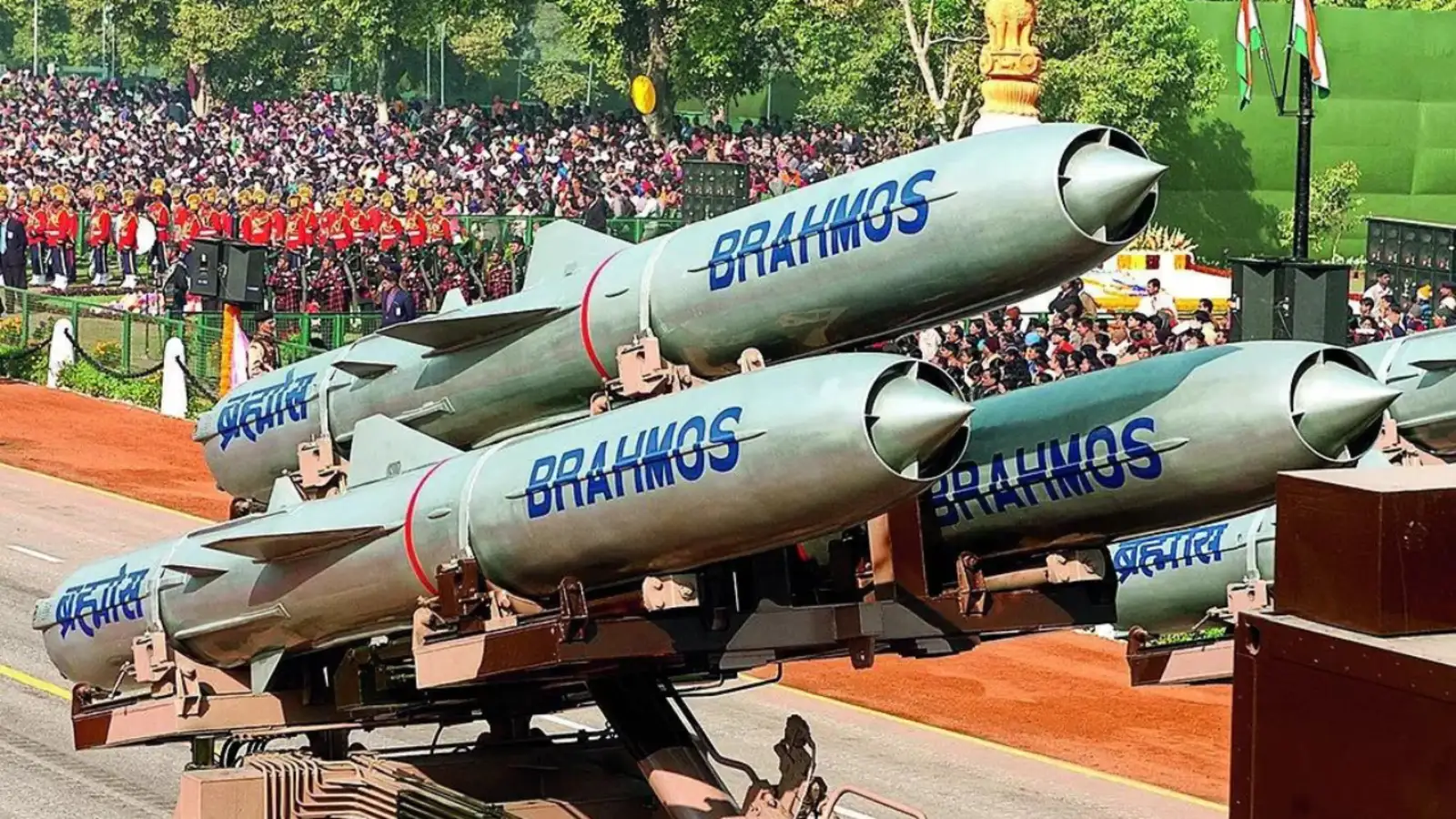
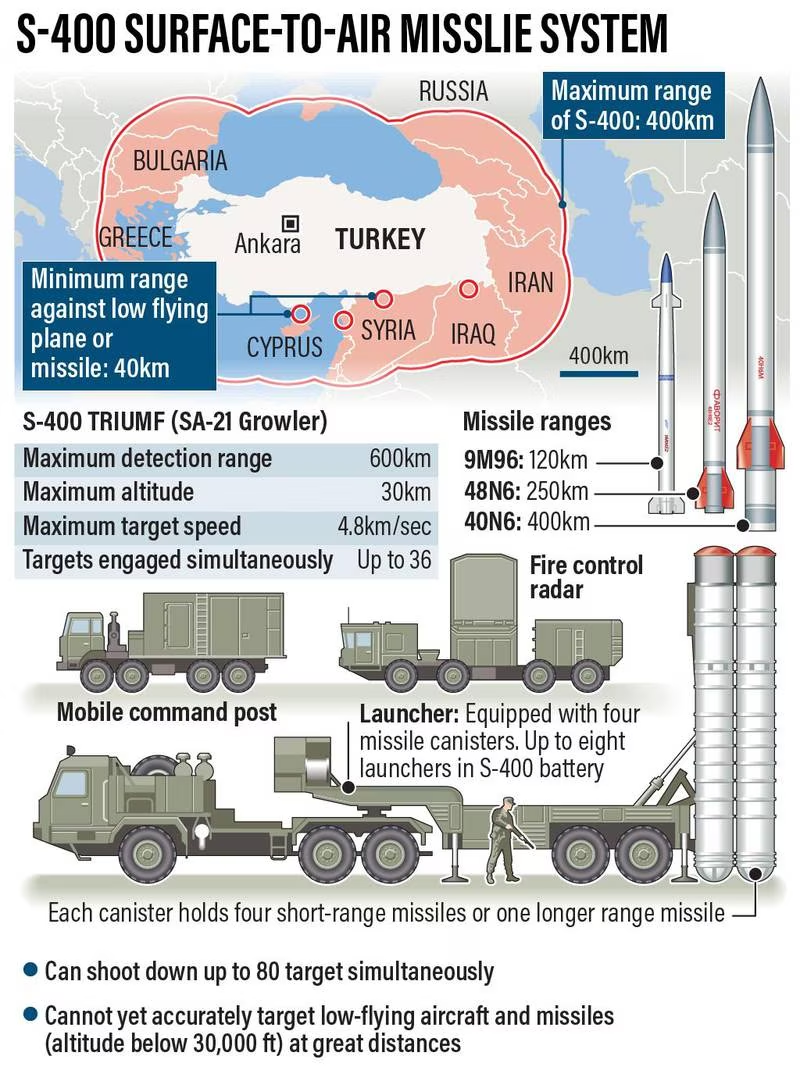

.png)
